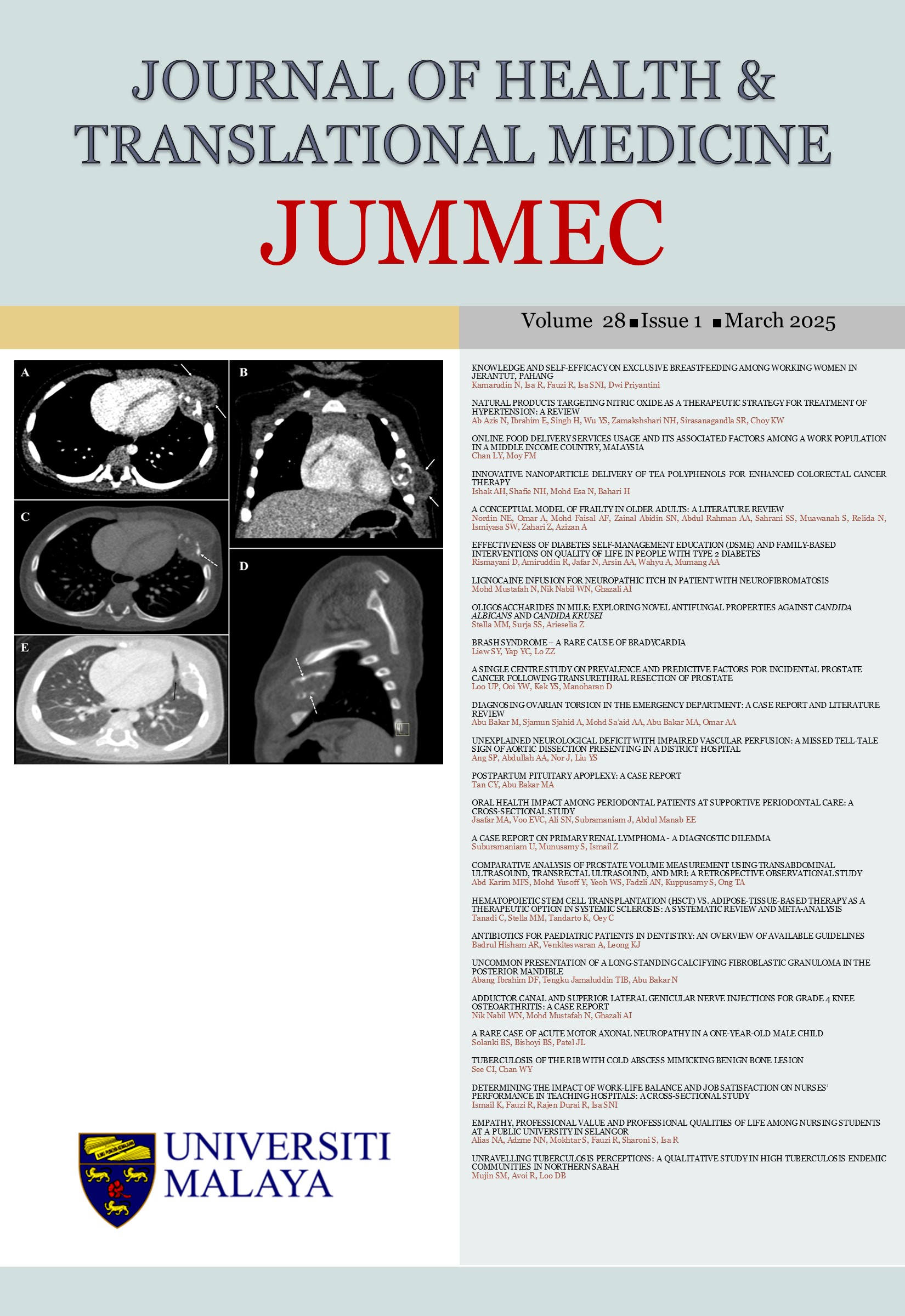A CASE REPORT ON PRIMARY RENAL LYMPHOMA - A DIAGNOSTIC DILEMMA
Received 2024-02-26; Accepted 2024-08-04; Published 2025-01-02
DOI:
https://doi.org/10.22452/jummec.vol28no1.15Keywords:
Primary Renal Lymphoma, Multiphase Computed Tomography, Ultrasound abdomen, Diffuse Large B Cell Lymphoma (DLBCL)Abstract
Primary Renal Lymphoma (PRL) is diagnosed when lymphoma affects the kidneys and there is no evidence of lymphatic manifestation outside the kidneys. PRL is very rare, with an incidence of less than 1%. This case report highlights Computed Tomography (CT) features of PRL in a 68-year-old female with histology-confirmed renal lymphoma. She presented with worsening left flank pain for two months, associated with constitutional symptoms. Abdominal examination reveals a tender mass in the left hypochondriac region, extending to the left lumbar region. Ultrasound revealed an irregular, solid hypoechoic lesion with cystic spaces in the left kidney. Multiphasic CT renal revealed a large ill-defined mass with poor enhancement in both corticomedullary and nephrographic phases, with no significant washout in the delayed phase. It has a low attenuation value of +30 to +50HU on non-enhanced CT and contains no calcification. Meanwhile, in other renal malignancies, particularly Renal Cell Carcinoma (RCC), a renal mass will exhibit significant enhancement with contrast washout in the delayed phase. RCC often demonstrates early infiltration into the Inferior Vena Cava (IVC). The patient is treated with chemotherapy, and a follow-up Positron Emission Tomography-Computed Tomography (PET-CT) presents a smaller left renal mass. In conclusion, a hypovascular renal mass on CT should raise the suspicion of a PRL, and early tissue diagnosis is important to avoid unnecessary nephrectomy.
Downloads
Downloads
Published
Issue
Section
License
All authors agree that the article, if editorially accepted for publication, shall be licensed under the Creative Commons Attribution License 4.0 to allow others to freely access, copy and use research provided the author is correctly attributed, unless otherwise stated. All articles are available online without charge or other barriers to access. However, anyone wishing to reproduce large quantities of an article (250+) should inform the publisher. Any opinion expressed in the articles are those of the authors and do not reflect that of the University of Malaya, 50603 Kuala Lumpur, Malaysia.


